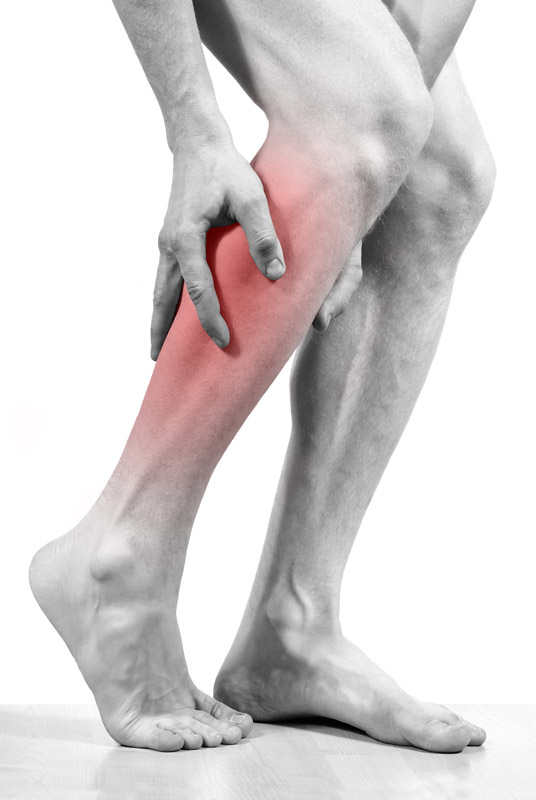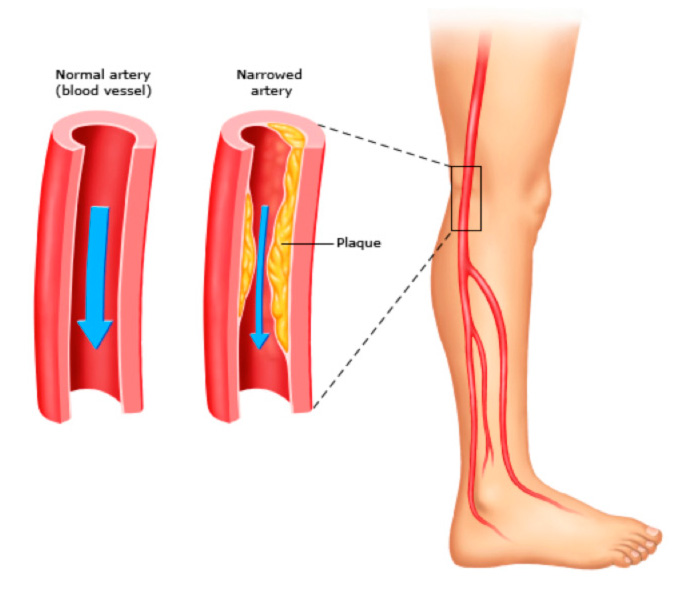Peripheral Arterial Disease
Peripheral artery disease (PAD) is a condition that can cause leg pain that gets worse with activity. Muscle pain that gets worse with activity and better with rest is called “claudication.”
PAD affects the blood vessels (called arteries) that bring blood to the legs.
Normally, blood flows easily through arteries to all parts of the body. But sometimes, fatty clumps called “plaques” build up inside the walls of arteries. Plaques can cause arteries to become narrow or blocked. This prevents blood from flowing normally. When muscles do not get enough blood, symptoms can occur.
Some people have a greater chance of getting PAD, such as those who:
- Smoke
- Have diabetes
- Have high cholesterol
- Have high blood pressure
What are the symptoms of PAD?
PAD often causes pain in the back of the lower leg. The pain usually gets worse with walking and exercise, and gets better with rest. PAD can also cause pain in the feet, thighs, or buttocks. People who have leg pain can have other symptoms, too, such as:
- Trouble walking up stairs
- Trouble getting an erection (in men) or trouble with sexual arousal (in women)
Symptoms of claudication can be mild or severe, depending on:
- Which arteries are affected
- How narrow the arteries are
- How much activity a person does
Is there a test for PAD?
Yes. Your surgeon can do different tests to find out if you have PAD, and to check how severe it is. He might:
- Take the blood pressures in your arm and ankle at rest and right after exercise, and compare them
- Order a blood vessel imaging test such as an ultrasound, which can show pictures of your leg arteries
How can I help treat my PAD?
To help treat your PAD and prevent it from getting worse, you can:
- Stop smoking
- Get your diabetes, high blood pressure, and high cholesterol under control (if you have these conditions)
- Exercise – Doctors recommend that most people with PAD exercise each day. Ask your surgeon which type of exercise is right for you.
What other treatments might I have?
Along with exercise and getting medical conditions under control, most people are treated with medicines including cholesterol lowing drugs such as statins and also blood thinning medications such as aspirin.
If you still have severe symptoms after trying medicines, your doctor will talk with you about the possibility of having surgery or a procedure to increase blood flow to your legs and feet. Your treatment options might include:
- Angioplasty or stenting – During angioplasty or stenting, the surgeon sends a thin tube with a balloon at the end of it to the part of the artery that is blocked. Then he inflates the balloon to open the blockage. Often the surgeon props open the artery using a tiny mesh tube called a stent, which stays in the body.
- Bypass surgery – During bypass surgery, the surgeon removes a piece of blood vessel from another part of the body. Then he or she reattaches that piece of blood vessel (called a graft) above and below the area that is clogged. This re-routes blood around the clog, and allows it to get to the part of the leg that was not getting enough blood. Sometimes instead taking a graft from another part of the body, the doctor can use a manmade graft.
What should I know about the different procedures? — Angioplasty and stenting are used to treat 1 or 2 blocked areas. Surgery works best to treat more than 2 blocked areas. People who have the fewest long-term problems after bypass surgery include those who are younger than 70, do not have diabetes, and do not have PAD below the knee.
Your surgeon might recommend a procedure for you, depending on your symptoms, age, and medical problems.
Blocked Iliac Artery prior to intervention
Artery now widely open post stenting


